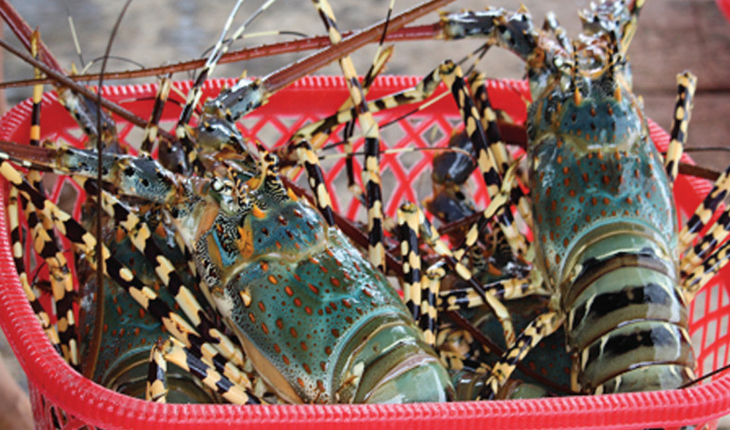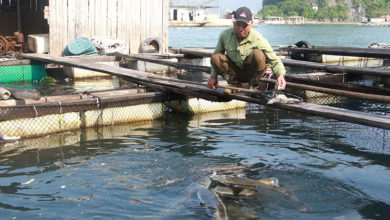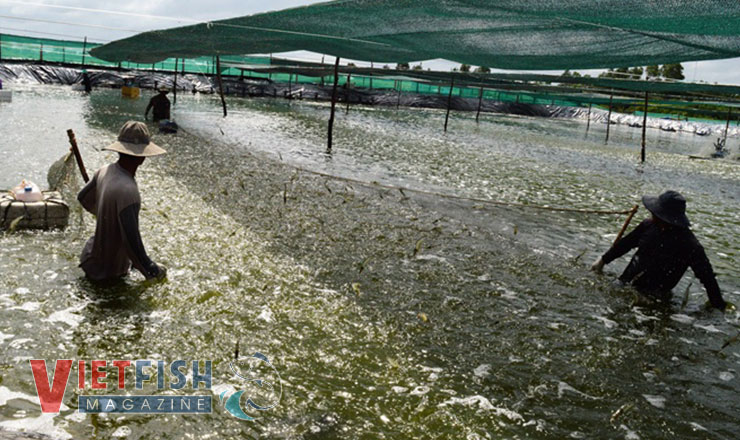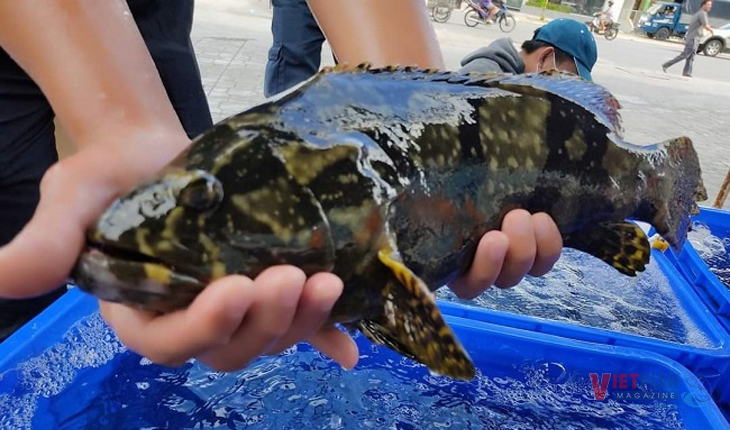Mud crabs farming in plastic boxes sold at 600-700 thousand dong/kg
Started with 1,200 baby crabs, a married couple in Nghi Xuân district were the first to achieve success in farming crabs in plastic boxes in Hà Tĩnh.
Sơn and his wife, Lý, came to Hà Tĩnh to invest into an extensive pond for crab farming. However, fierce weather prevented crabs from growing, hence, low economic efficiency.
In 2022, through media channels, they went around the country to learn about crab farming experiences and shifted to rear crabs in plastic boxes.
The first 6,000 plastic boxes shipped from Cà Mau were placed in the 600m2 land. Each box is rectangular, 40cm long, 22cm wide, and 33cm high, and is divided into two parts. Each crab is reared in each part. As many as 1,200 baby crabs are stocked.
“When I visited crab farming models, I saw boxes piled up to stories. But such design makes it difficult for feeding and disease control. Then we just place boxes in one story which is convenient for cleaning and observation of crabs’ growth”, said Lý.
In her opinion, the highlight of such a crab farming model is to save water based on the principle of rotation and air bubbling to create oxygen. When water is pumped into the crab farming boxes, leftovers and waste go through the preliminary filter system to the microbiological tank and are sterilized by the UV.
We put kaldnes pellets into the rotation system. Microbe living on kaldnes plays as corals which helps clean the living environment for crabs by filtering leftovers and waste. Thus, water is rotated at the maximum level, resulting in high survival rate, high productivity, and no negative concerns to the environment.
“As for crab farming plastic boxes, water is the most important with proper pH, salinity, and temperature, between 25-30 degree C. Thus, we have to check the criteria daily for prompt adjustment so as to assure the perfect living conditions for crabs”, emphasized Sơn. He added that breeding stock must also be put on the first priority.
All the baby crabs were exploited in the local area by local fishermen and then sold to the couple. Natural baby crabs are healthy, not vulnerable to diseases, and grow fast.
Baby crabs are firstly stocked in large tanks until they reach a proper size before being put into plastic boxes. They are fed fish seafood such as herring, clam, mussels, and snails.
“We invested more than 700 million dong into the crab farm. Crabs weigh up well with survival rates reaching over 90%. Crabs molt every 15 days. They gain another 50-100 grams after each molt. Crabs weigh up to 300-400 grams each after about two months of stocking; harvest will be carried out then”, said Sơn.
Male crabs are sold at 600-700 thousand dong/kg and soft-shell crabs are sold at 800-850 thousand dong/kg. About 500 crabs were sold in the first crop, Sơn and Lý earned more than 100 million dong.
VFM






